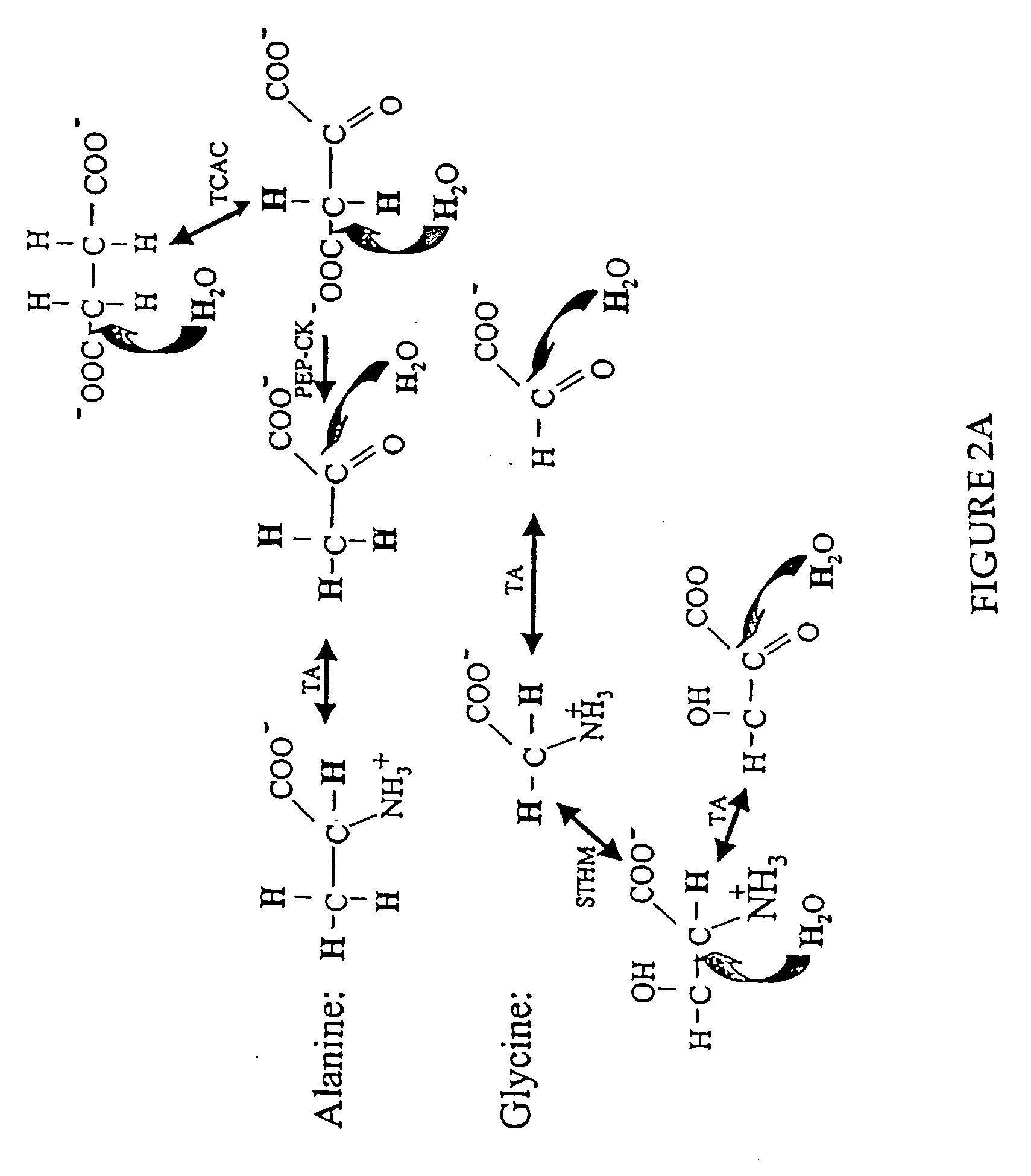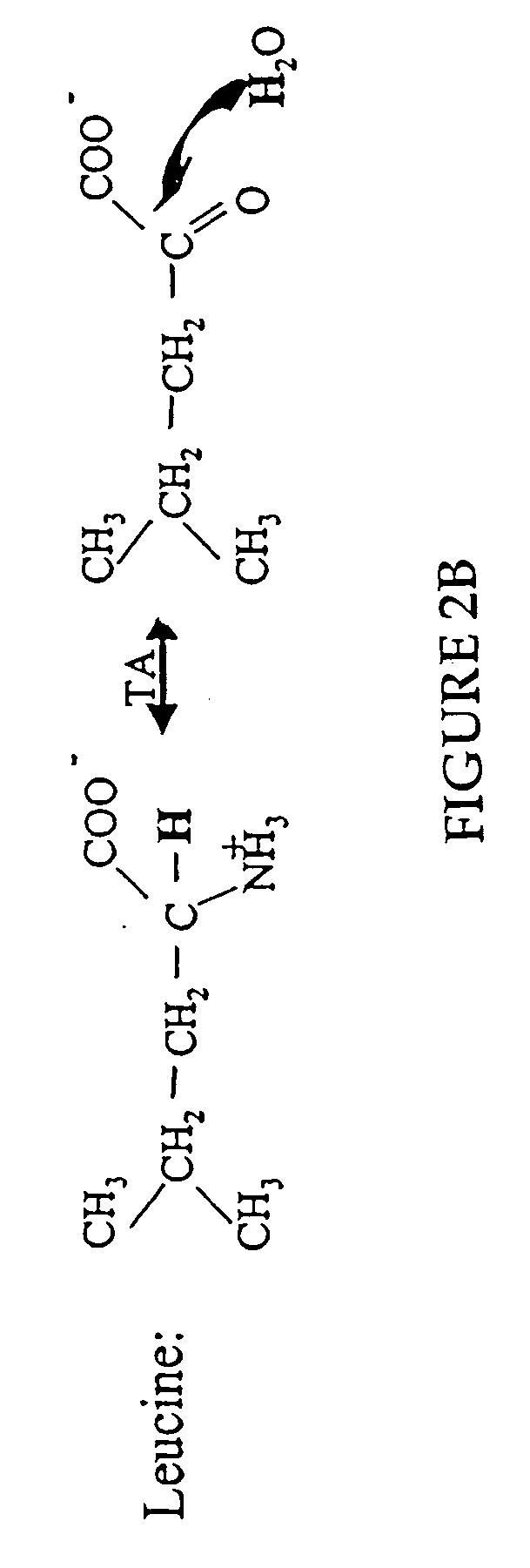Measurement of protein synthesis rates in humans and experimental systems by use of isotopically labeled water
a protein synthesis rate and isotopically labeled water technology, applied in the field of biochemical kinetics, can solve the problems of high cost of maintaining a constant level of label in the biosynthetic precursor pool for a relatively long period of time, and the practicability of continuous administration approach
- Summary
- Abstract
- Description
- Claims
- Application Information
AI Technical Summary
Benefits of technology
Problems solved by technology
Method used
Image
Examples
example 1
2H2O Labeling in Rat
[0177] Sprague-Dawley rats (200-250 g, Simonsen Inc., Gilroy Calif.) and C57Blk / 6ksj mice (10-15 g, Jackson Laboratories, Bar Harbor Me.) were used. Housing was in individual cages for rats and groups of 5 for mice. Feeding was ad-libitum with Purina® rodent chow. All studies received prior approval from the UC Berkeley Animal Care and Use Committee.
[0178] The 2H2O labeling protocol consisted of an initial intraperitoneal (ip) injection of 99.9% 2H2O, to achieve ca. 2.5% body water enrichment (assuming total body water to be 60% of body weight) followed by administration of 4% 2H2O in drinking water. For labeling of rats in utero, 4% drinking water was started while the male and female adult rats were housed together for mating (i.e. before pregnancy) and the 4% 2H2O drinking water was continued through the pregnancy and post-delivery period.
[0179] Urine was collected longitudinally from some animals to establish the time course of body 2H2O enrichments. A de-...
example 2
Incorporation of 2H2O in Rat Muscle
[0181]FIG. 7 depicts measured incorporation of 2H2O into selected amino acids isolated from muscle proteins in the rat. Enrichments of 2H in amino acids was determined by gas chromatographic-mass spectrometric analysis after hydrolysis of muscle proteins to free amino acids.
example 3
Incorporation of 2H2O in Rat Bone Collagen
[0182]FIG. 8 depicts measured incorporation of 2H2O into selected amino acids isolated from bone collagen in the rat. Enrichment of 2H in amino acids was determined by gas chromatographic-mass spectrometric analysis after hydrolysis of bone collagen to free amino acids. Calculated collagen turnover rate constant (k) was nearly identical from glycine (k=0.044d−1), alanine (k=0.041d−1), or proline (not shown, k=0.038d−1).
[0183] Rats were killed every 1-2 weeks during a 10-week period of 2H2O administration. The rear left femur was collected and was dissected free of soft tissue. Bone marrow and trabecular bone were removed using a needle with sharp cutting surface (ref: Bone 2000). After washing 3 times with water, the bone was splintered and powdered under liquid N2 in a Spex mill and defatted with chloroform:methanol (1:1, v:v). After drying, the powdered bone was subjected to acid hydrolysis in 6N HCl (110° C., 24 hr). The free AA were dr...
PUM
| Property | Measurement | Unit |
|---|---|---|
| Molar concentration | aaaaa | aaaaa |
| half-life | aaaaa | aaaaa |
| time | aaaaa | aaaaa |
Abstract
Description
Claims
Application Information
 Login to View More
Login to View More - R&D
- Intellectual Property
- Life Sciences
- Materials
- Tech Scout
- Unparalleled Data Quality
- Higher Quality Content
- 60% Fewer Hallucinations
Browse by: Latest US Patents, China's latest patents, Technical Efficacy Thesaurus, Application Domain, Technology Topic, Popular Technical Reports.
© 2025 PatSnap. All rights reserved.Legal|Privacy policy|Modern Slavery Act Transparency Statement|Sitemap|About US| Contact US: help@patsnap.com



